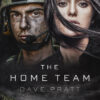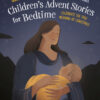Hi! I’m Kathy Ide. In addition to being a published author, I’m a full-time professional freelance editor. For CAN, I’m blogging about tips for writers based on the manuscripts I edit.
Citing Sources
As a matter of ethics, copyright law, and courtesy to readers, make sure you’ve identified the source of every direct quotation in your manuscript, as well as all facts, statistics, or opinions not universally known or easily verified. (Note: Do not state something as fact simply because you’ve heard it often quoted—like “Fifty percent of all marriages end in divorce.”)
There are three basic styles of documentation: footnotes, endnotes, and bibliography. (See The Chicago Manual of Style for details on how to do them properly.)
It is the author’s responsibility (not the publisher’s) to research and verify the sources of all quotations and to request written permission to quote anything that isn’t covered under Fair Use or Public Domain.
Different versions of the Bible have different fair-use guidelines. Make sure you do not quote more than the allowed amount without obtaining proper permission. (See pages 56–73 of The Christian Writer’s Manual of Style for a list of guidelines for most popular Scripture versions, including where to write to request permission for each one.)



